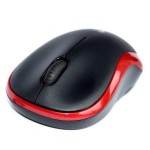 Not all mice are created equal, but their performance is primarily based on operating system settings rather than the hardware.
Not all mice are created equal, but their performance is primarily based on operating system settings rather than the hardware.
Not only do mouse settings provide useful options such as allowing a slower double-click speed, but many are fun to experiment with, too.
Mouse settings are also (and I probably shouldn’t be telling you this) a quick-and-easy way to play practical jokes on other people.
Quickly, there are two terms that you will want to become familiar with.
The words “pointer” and “cursor” both refer to the moving object that you see on your screen, that echos the movement of your mouse.
Now, on to the options!
Windows 7 Mouse Settings
To be able to explore the mouse settings in Windows 7, click Start > Control Panel > View by “Large Icons” > Mouse.
Windows 7 Mouse Properties – Buttons
Under Button configuration, you can swap the functions of the mouse buttons, which can be helpful for left-handed users.
Under Double-click speed, you can allow slower or faster double-clicks to be recognized.
The Clicklock option would enable you to highlight or drag without holding down the mouse button.
Windows 7 Mouse Properties – Pointers
The next tab in the Mouse Properties window is called “Pointers”.
Here, you can customize the look and feel of the pointer/cursor/etc. by changing the scheme or one of the options associated.
There is a Use Default button to restore the original defaults, if you don’t end up liking your changes.
Windows 7 Mouse Properties – Pointer Options
Under Motion, you can slow down or speed up the pointer, as well as do away with some of the pointer’s precision.
The Snap to option is actually rather nice, as it will automatically move the pointer to the default button when a dialog box pops up, meaning less work for you!
If you like visual effects, you can display the pointer tail (which is fun to amuse yourself with, up until you start seeing double), show the pointer while typing, or show the location of the pointer when the Ctrl key is pressed.
Windows 7 Mouse Properties – Wheel
From the Wheel tab, you can choose how many lines are scrolled each time the mouse wheel is rolled one notch.
That’s vertical scrolling; the horizontal scrolling only works with a special mouse.
As I have mentioned before, turning your mouse sideways and scrolling the then-horizontal wheel doesn’t count as horizontal scrolling.
Windows 7 Mouse Properties – Hardware
The hardware tab shows details about your mouse.
Linux (Fedora/KDE) Mouse Settings
To be able to explore the mouse settings in Fedora, click Start > Run Command > type in “mouse”, and when “Mouse Settings” is highlighted, press the Enter key (or click on it).
Linux (Fedora/KDE) Mouse Settings – General
The Button Order allows you to swap the functions of the mouse buttons, which can be helpful for left-handed users.
You can also reverse the direction of the scroll wheel, which I think would be most useful as a prank to play on unsuspecting family or friends.
The transition to Linux is difficult for some people due to the fact that, by default, files/folders/icons/etc. open with a single click. Those settings can be changed from this window, so that single clicks select and double clicks open.
Linux (Fedora/KDE) Mouse Settings – Advanced
Under the Advanced tab, you will be presented with options such as increasing or decreasing your mouse speed, recognizing slower double clicks, scrolling more or less than the standard 3 lines, and more.
You can play around with the setting and see if you like the changes that you make.
If you don’t like your changes, there’s a Defaults button at the bottom of the window, that will to restore the original settings.
Linux (Fedora/KDE) Mouse Settings – Mouse Navigation
The last tab, Mouse Navigation, allows you to use your keyboard’s number pad to move the mouse pointer around on the screen.
It’s tedious, but fun to try at least once.
Linux (Fedora/KDE) Cursor Settings
In Linux, the cursor settings are in a different location from the rest of the mouse settings.
To change them, click Start > Run Command > type in “cursor” and when “Cursor Theme” is highlighted, press the Enter key (or click on it).
From this window you can change the size of your cursor, or add a new theme (if you have one).
Conclusion
Now that your mouse is performing according to your preferences, it’s time to learn more about what the mouse can do to help you.
And we’ll explore that.
Next week.
